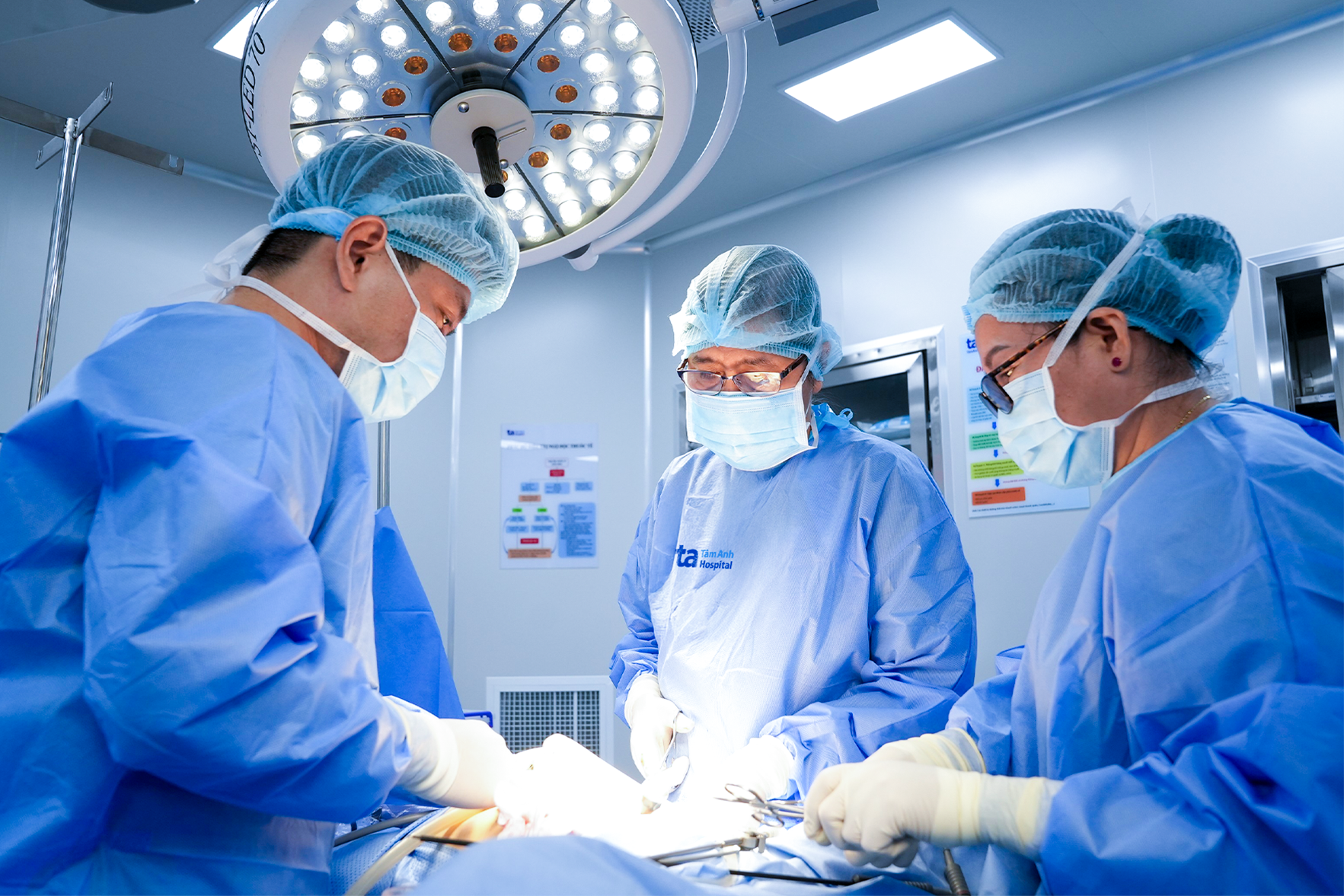On 2/7, Doctor Nguyen Van Phuc from the Obstetrics and Gynecology Center at Tam Anh General Hospital in TP HCM, reported that Linh's uterine fibroids, varying in size, were clustered throughout her uterine muscle and under the endometrium, showing signs of degeneration. The surgical team worked to remove the fibroids while preserving her uterus.
After a 2.5-hour operation, the surgeons removed 15 fibroids of varying sizes, the largest measuring 10x8 cm. Linh is recovering well, having lost only 200 ml of blood and not requiring a transfusion.
 |
The surgical team removing Linh's uterine fibroids. Photo: Tue Diem |
Linh was first diagnosed with a chicken-egg-sized uterine fibroid 5 years ago and was advised to have regular check-ups. However, she neglected these follow-up appointments for several years. Recently, she experienced a progressively enlarging abdomen, heavy menstrual bleeding, and constipation, prompting her to seek medical attention.
According to Doctor Phuc, the growth of uterine fibroids is closely linked to the hormone estrogen. Elevated estrogen levels stimulate the growth of uterine muscle and endometrium, causing fibroids to enlarge during a woman's reproductive years. Additional risk factors include having few or no children, infertility, or multiple miscarriages.
Uterine fibroids are generally treatable, but many cases are discovered late, or patients fail to attend scheduled check-ups. Often, women seek medical help only when the fibroids become large enough to cause complications such as difficulty conceiving, heavy menstrual bleeding, anemia, constipation, or more severe issues like ureteral compression, which can affect kidney function. Without intervention, these fibroids can impact overall health and fertility. If a pregnancy occurs with large fibroids, there are increased risks of miscarriage, stillbirth, late miscarriage, premature birth, premature rupture of membranes, slow fetal growth, and the need for a cesarean section if the fibroid obstructs the birth canal. Additionally, there's a greater risk of blood loss and postpartum hemorrhage during delivery. Conversely, surgical removal of fibroids increases the risk of uterine scarring, endometrial adhesions, and endometrial damage. After surgery, patients must wait at least 6 months for the uterus to heal before attempting pregnancy.
Uterine fibroids vary in number and size. In many cases, small fibroids go unnoticed and are discovered incidentally during routine gynecological exams or ultrasounds. Larger fibroids, however, may be palpable, causing a noticeable abdominal enlargement.
The condition can develop silently without symptoms. As fibroids grow, women may experience heavy menstrual bleeding, urinary problems, abdominal enlargement, constipation, abdominal cramping, pelvic pain, or pain during intercourse.
Tue Diem
*The patient's name has been changed.
| Readers can submit questions about obstetrics and gynecology here for doctors to answer. |












